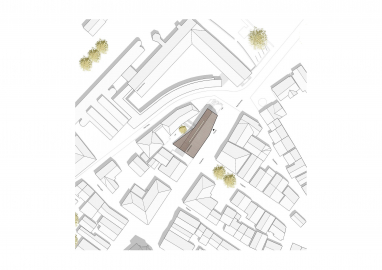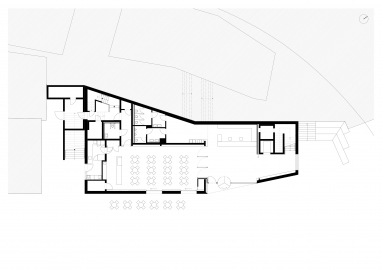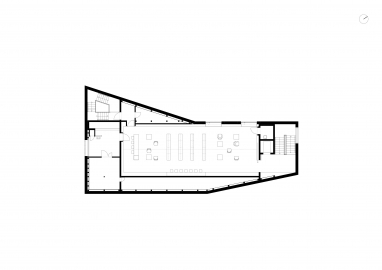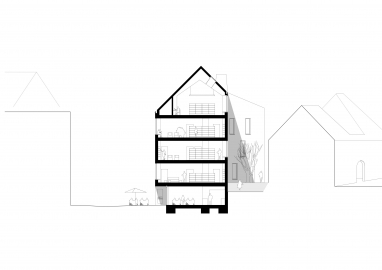New Town Library Rottenburg am Neckar
The new town library is built in the town centre, between the medieval town centre and the Episcopal palace, serving on this prominent site as a new public meeting place.
The entrance level of the library, with generous reception desk, is about public communication and is characterised by its maximum openness. An open house for the citizens of the city with a cafe that can also be used for events in the evening. The upper floors are available to the public for reading and learning. The extensive walls are largely covered with library shelves. These are interrupted by large windows with deep reveals, which are suitable for sitting and reading. The readers in the windows become visible from the outside, proclaiming the function of the building into the public space.
The new town library is a communicative building in the urban fabric. Communication meaning, on this urban-spatial level, that topics of the environment are recorded, interpreted and re-rendered. So something new to emerges whose “genetic code” is drawn from the environment. The building form for the city library was developed from the cranked form of the neighbouring buildings. This creates a spatial dialogue. The library is located at the interface of buildings with very different scales. The varying eaves heights of the new building - due to the straight pitched roof on the cranked building plan transfers between the grandeur of the Episcopal Palace and lower buildings of the old town.
The house is built in a massive brick construction with reinforced concrete ceilings and stiffening reinforced concrete walls. The hollow bricks filled with mineral wool provide the necessary thermal insulation. This means that the brush-finish render can be applied directly onto the solid exterior walls.
The climate concept focuses on passive measures: moderate glass content, solar control glazing, exposed concrete ceilings as thermal mass.
The ventilation system for the café and the media rooms uses optimised heat recovery and adiabatic cooling.

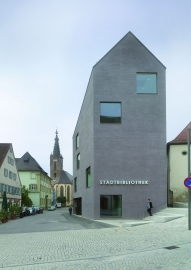 © Roland Halbe
© Roland Halbe
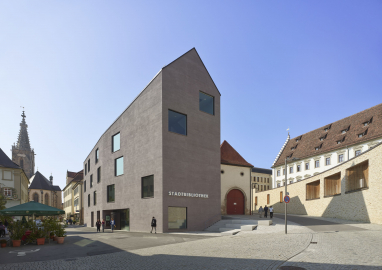 © Roland Halbe
© Roland Halbe
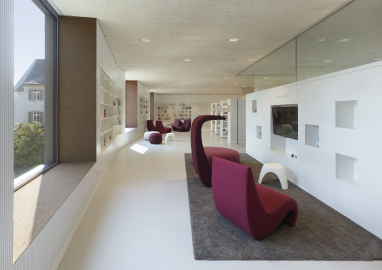 © Roland Halbe
© Roland Halbe
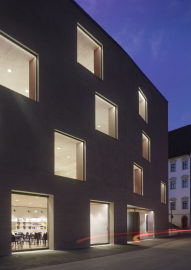 © Roland Halbe
© Roland Halbe
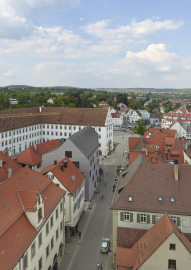 © Roland Halbe
© Roland Halbe
